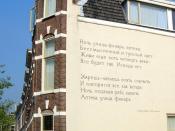#1Reflection on "My Last Duchess"The speaker is notably a snobbish, childish, and indifferent Duke. He does not seem to have any remorse for his murder of his "Duchess" and remains arrogantly steadfast to his justification that his murder was for the cause of her (the Duchess's) "too soon made glad" by other men, and her smiles to everyone who passed. He describes her as if she was just another distant thing in the past, and disregards the painting of her as just another piece of artwork.
The poem begins with the Duke of Ferrara introducing the painting to an audience (probably another duke). He begins with how the painting was made, and then moves on to how her "heart [was] too easily impressed". As the poem develops, the Duke becomes more and more spiteful about his "last Duchess" and feels that she regarded his gifts as "anybody's gift".
He resents her smiles to him because she smiles to all who passed, and resolved to give commands to stop all the smiles together. Finally, he moves on to show his other artworks in his collection, referring to his Neptune taming a sea-horse sculpture.
The poem has rhyming lines, but the rhyme is usually in the middle of an idea or sentence, giving the poem a thrusting movement forward. The mainly iambic pentameter unifies the poem, with occasional trochaic, dactylic, and anapestic words to offset certain ideas, such as "countenance", "busily", "easily", "broke in", and "all smiles". Certain denotative words such as "countenance" and "earnest" also offset certain ideas, as well as give subliminal messages revealing the Duke's murderous intents.
#2The Duke of Ferrara craves attention, and would kill those who do not pay special attention to him. The poem starting in the middle of some Duke's...


